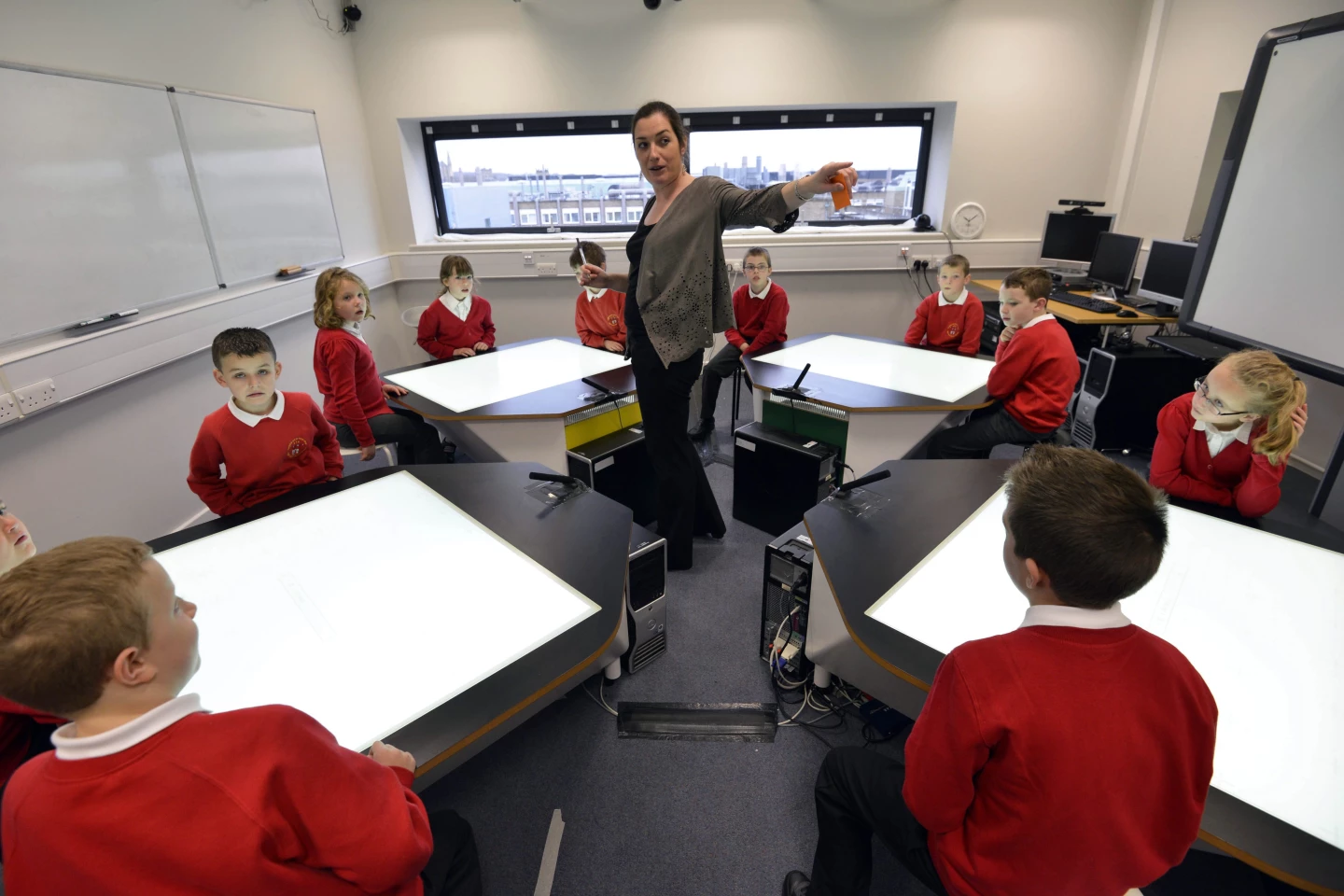Mathematics has always been one of those subjects that poses a lot of difficulties for some young students. In the 3-year SynergyNet project conducted by Britain’s Durham University, however, it was found that something might help – multi-user multi-touch networked desks.
The study involved over 400 children at 12 schools, most of whom were between eight and ten years old. The NumberNet desks used by some are capable of responding to touch-based commands from several users at once, via vision systems that detect infrared light. These desks allow groups of pupils to work together to solve arithmetic problems.
The teacher views live feeds from all the desks, and can intervene if they see that a group of students is going about solving their equation the wrong way. They can also send new problems out to specific groups, send one group’s work to another for review, or bring it up onto the main smartboard at the front of the classroom for discussion.

It was found that 45 percent of the students using the desks increased the number of unique mathematical expressions they created since the beginning of the project, while only 16 percent of students working on traditional paper saw the same sort of increase.
“Our aim was to encourage far higher levels of active student engagement, where knowledge is obtained by sharing, problem-solving and creating, rather than by passive listening,” said lead researcher Prof. Liz Burd. “This classroom enables both active engagement and equal access. We found our tables encouraged students to collaborate more effectively.”
Don’t expect such technology in a school near you just yet, though. Although the scientists have seen improvements since their project began, they note that the NumberNet system is still quite expensive to set up, and requires a great deal of technical support.
A paper on the research was recently published in the journal Learning and Instruction.








